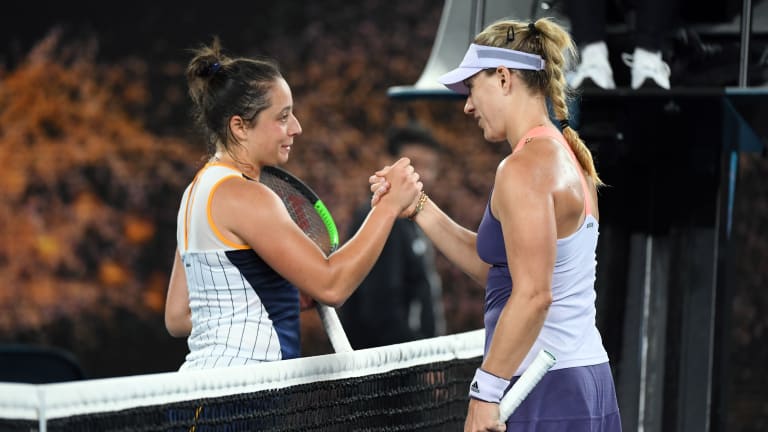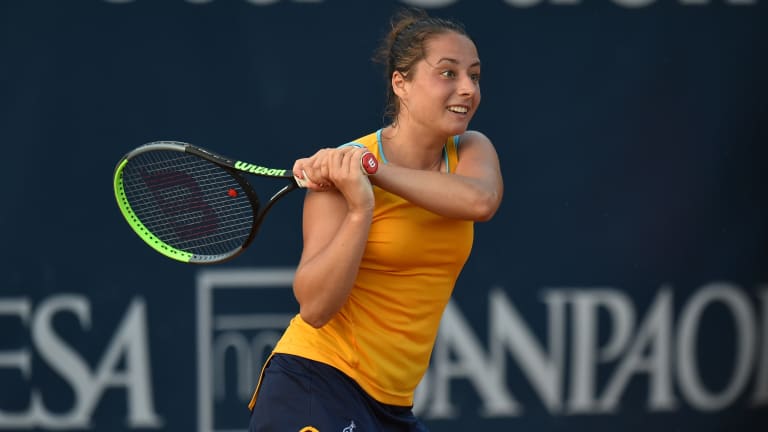Scholarly by nature, law student Cocciaretto learning to "do my job"
By Aug 06, 2020Billie Jean King Cup
Italy retains the Billie Jean King Cup with Jasmine Paolini's win over Jessica Pegula
By Sep 21, 2025Billie Jean King Cup
Italy back in Billie Jean King Cup final after comeback against Ukraine
By Sep 19, 2025Wimbledon
Coco Gauff, Jessica Pegula part of Wimbledon carnage, while Taylor Fritz survives—barely
By Jul 01, 2025Wimbledon
Jessica Pegula loses Wimbledon first round after winning Bad Homburg title
By Jul 01, 2025Billie Jean King Cup
Iga Swiatek leads Poland to first BJK Cup semifinal with singles and doubles wins over Czech team
By Nov 17, 2024Social
WATCH: Elisabetta Cocciaretto charms crowd with a little French after Roland Garros breakthrough
By May 31, 2024WTA Charleston, USA
“Effort is non-negotiable”: Victoria Azarenka shares spotlight with son Leo in his TC desk debut
By Apr 04, 2024Miami, USA
Naomi Osaka, playing “the most free” since returning to tour, charges into Miami second round
By Mar 21, 2024Facts & Stats
Ranking Reaction: Iga Swiatek kicks off milestone 70th consecutive week at No. 1
By Jul 31, 2023Scholarly by nature, law student Cocciaretto learning to "do my job"
Now 19, Elisabetta Cocciaretto posted her first Top 25 win late Wednesday evening over Donna Vekic to reach her first WTA quarterfinal in Palermo.
Published Aug 06, 2020
Advertising

Scholarly by nature, law student Cocciaretto learning to "do my job"
© AFP via Getty Images
Advertising

Scholarly by nature, law student Cocciaretto learning to "do my job"
© Getty Images
Advertising
Advertising

Scholarly by nature, law student Cocciaretto learning to "do my job"